It may seem that slicing cheese is easy. You take the knife and cut. Unfortunately, there are so many styles of cheese that a basic kitchen knife won't always get the job done. If you've already started looking for cheese knives, you'll know there are many different options. Why are there so many, and what do they do so well? We've done the research and can tell you about the different cheese knives and which cheeses they're good for.
Here are the types of cheese knives:
- Cleaver
- Fork
- Offset
- Pronged
- Spreader
- Parmesan
- Open Work Blade
- Gorgonzola Knife
- Flat
- Narrow Plane
- Cheese Wire
- Cheese Plane
- Rind Cutter
- Grater
Now that you know the types of cheese knives, let's take a closer look. Keep reading to discover what cheeses they're best for, whether cutting cheese dulls knives, and how to cut cheese without getting it stuck to the knife.
![Cheese knife set on the wooden background. 14 Types Of Cheese Knives [Inc. What Cheese They're Good For And Why]](https://kitchenseer.com/wp-content/uploads/2021/07/Cheese-knife-set-on-the-wooden-background.-14-Types-Of-Cheese-Knives-Inc.-What-Cheese-Theyre-Good-For-And-Why.png)
14 Types of Cheese Knives To Know
Cleaver Knife
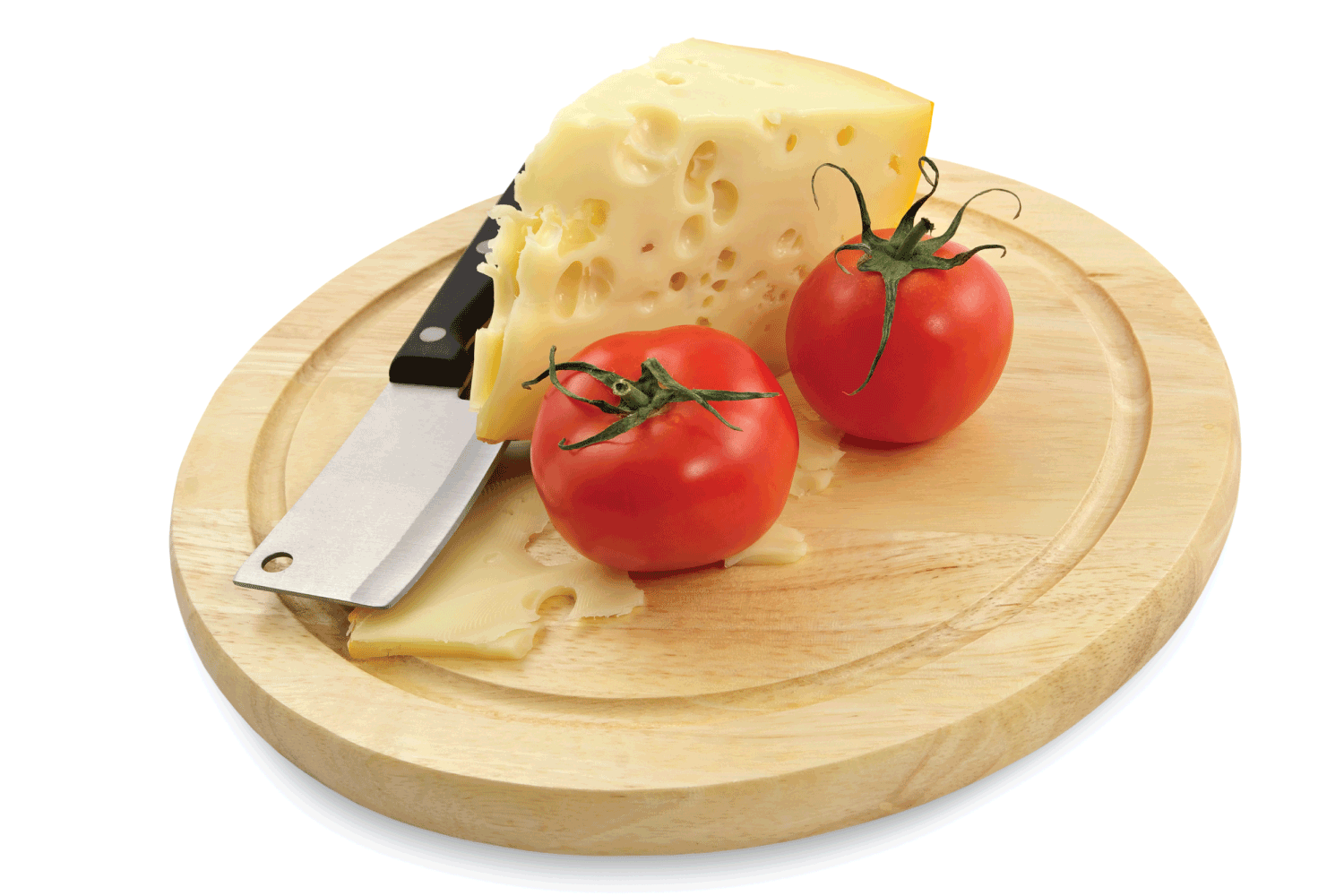
A cleaver knife is ideal for cutting semi-hard to hard cheese. It has a wide and rectangular blade and a handle. The cheese cleaver resembles a typical cleaver. The design of this blade makes it capable of slicing into harder cheeses such as cheddar, gruyere, and Colby.
Check out this stainless steel cheese cleaver on Amazon.
Cheese Fork
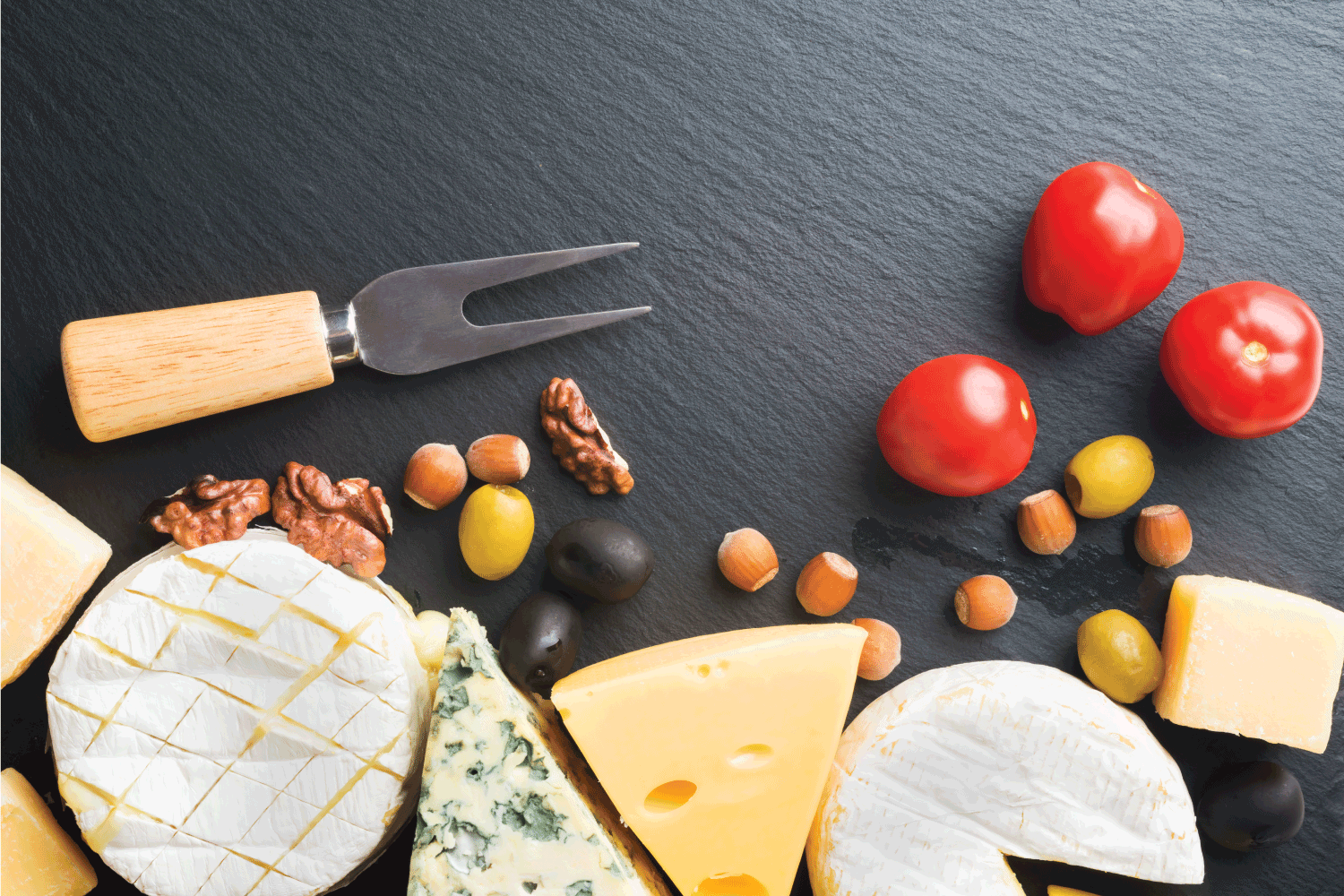
The cheese fork isn't necessarily for cutting, but it's still an important tool. This device has two pointed prongs and is used for picking up cut pieces of cheese. Feta, provolone, and cheddar are common cheeses for this utensil. A cheese fork is suitable for semi-soft to hard cheese.
Check out this knife set with a cheese fork on Amazon.
Offset Cheese Knife
An offset knife is a good multi-purpose blade. It has a thin, narrow blade. The knife handle isn't perfectly aligned with the blade, which is where it gets its name. This tool can handle anywhere from soft to hard cheeses. The offset design allows for greater control for hard cheeses. The thin blade and narrow design allow it to slice soft cheese without sticking to the knife.
Check out this offset knife on Amazon.
Pronged Cheese Knife
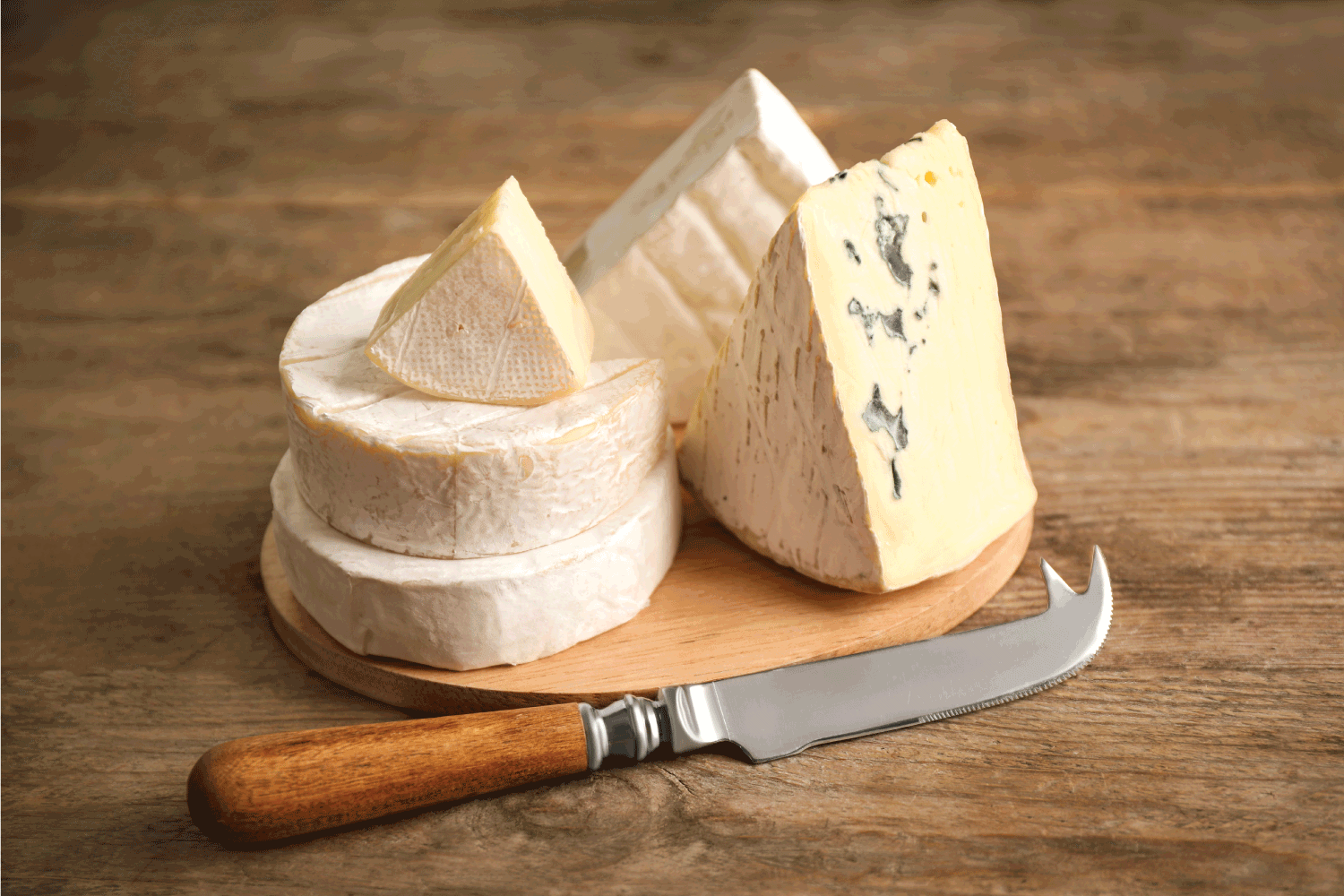
A pronged cheese knife is a very versatile tool. This blade is narrow with an upward curl and a pronged end. It can cut anything from soft cheeses to semi-hard cheeses. While some consider this blade too thick for soft cheese, its narrowness does prevent cheese from sticking. The pronged tip is used for serving or plating.
Check out this pronged cheese knife on Amazon.
Cheese Spreader
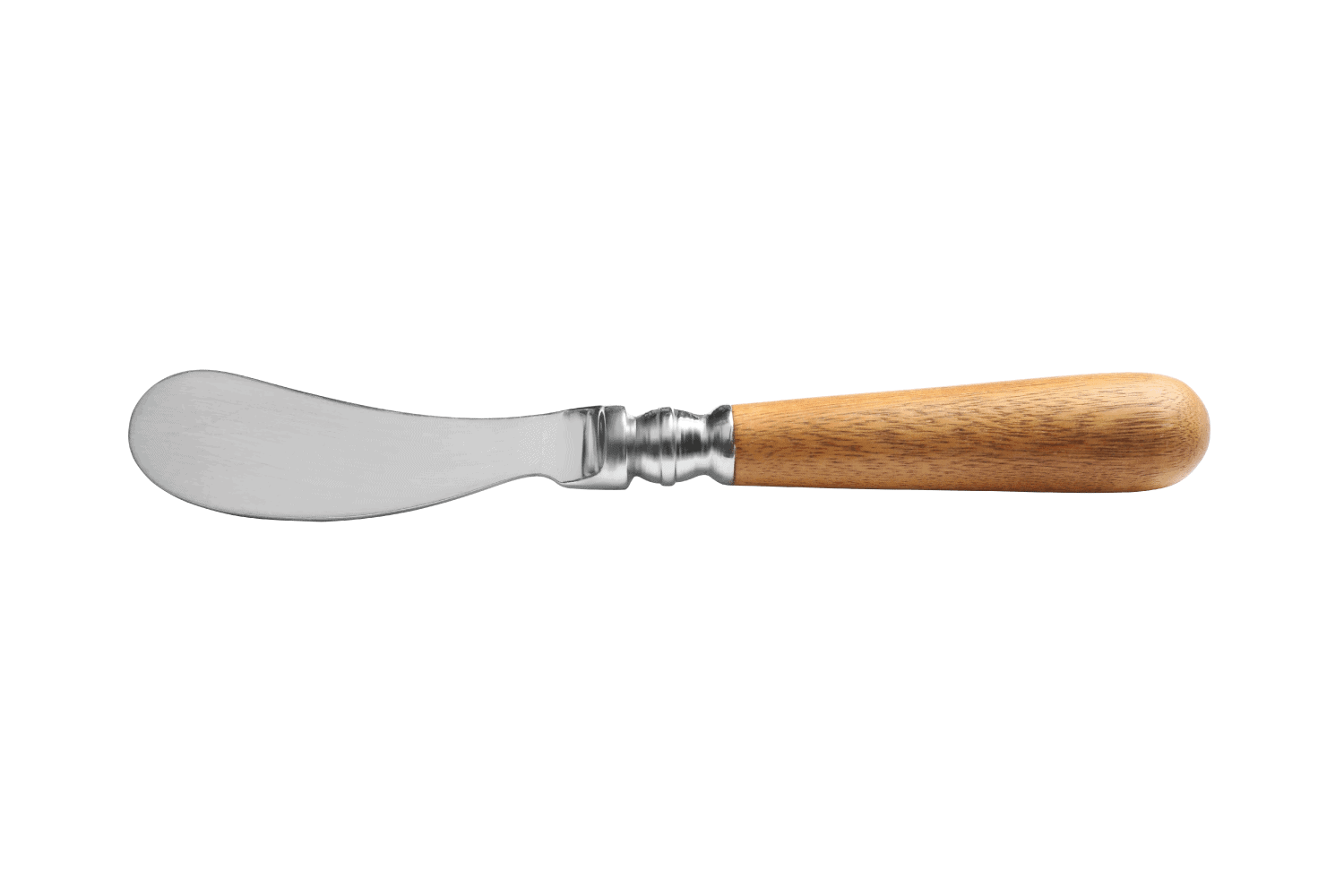
Not all cheeses are for cutting. In those instances, the cheese spreader is best for you. Also referred to as a spatula knife, this utensil is made for creamy cheeses. It has a dull edge and a rounded blade. Soft cheeses such as cream cheese or Robiola are ideal for a cheese spreader.
Check out this cheese spreader set on Amazon.
Parmesan Cheese Knife
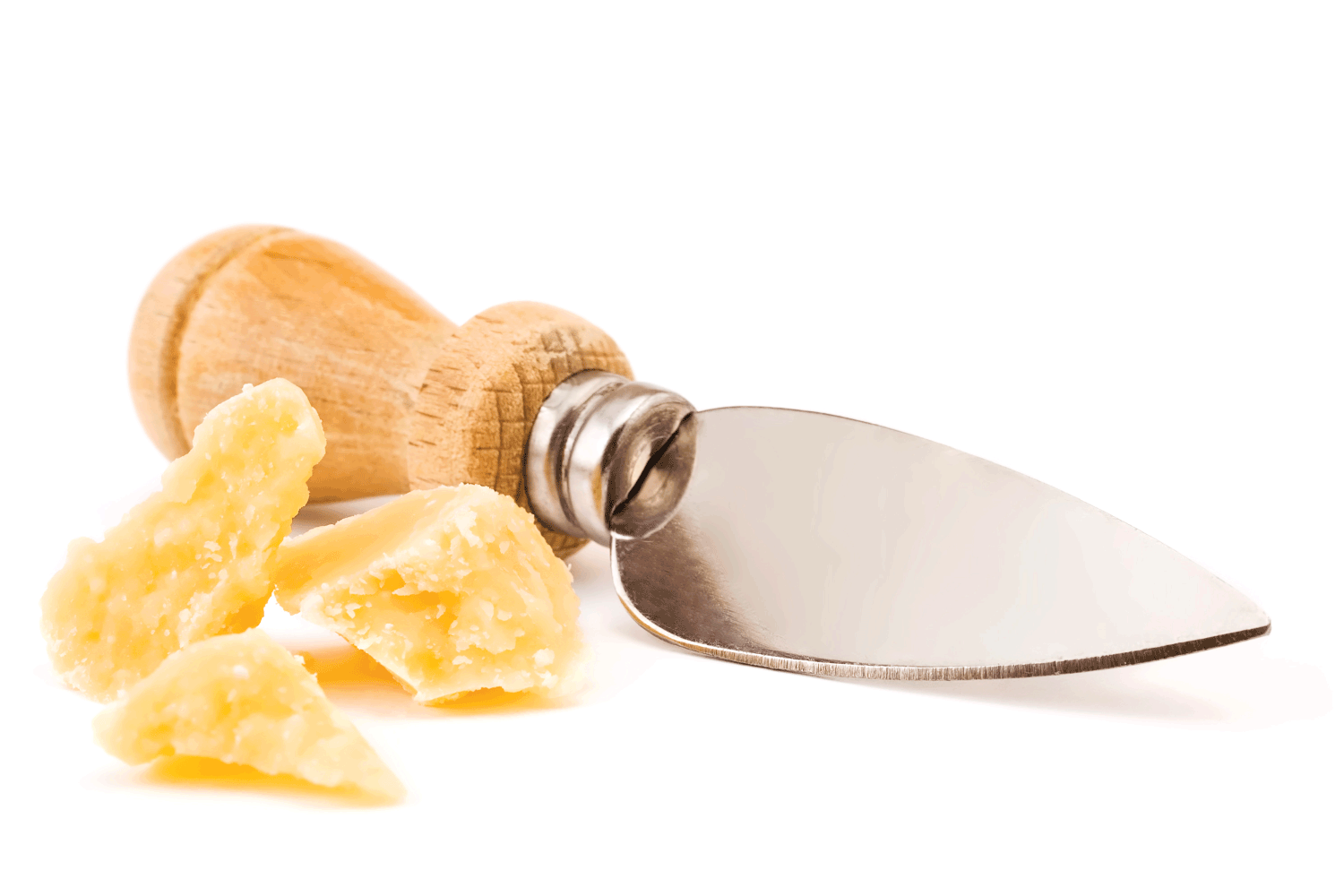
Known as the tagliarini knife in Italy, the parmesan cheese knife is suitable for more than just one type of cheese. These blades have a sharp pointy tip and typically have a drop shape. The sharp tip is ideal for cutting into rinds as well as hard cheeses. Parmesan cheese knives, also called almond knives, are best suited for cutting cheeses such as parmesan or castelmagno.
Check out this Parmesan cheese knife on Amazon.
Open Work Blade (Soft Cheese Knife)
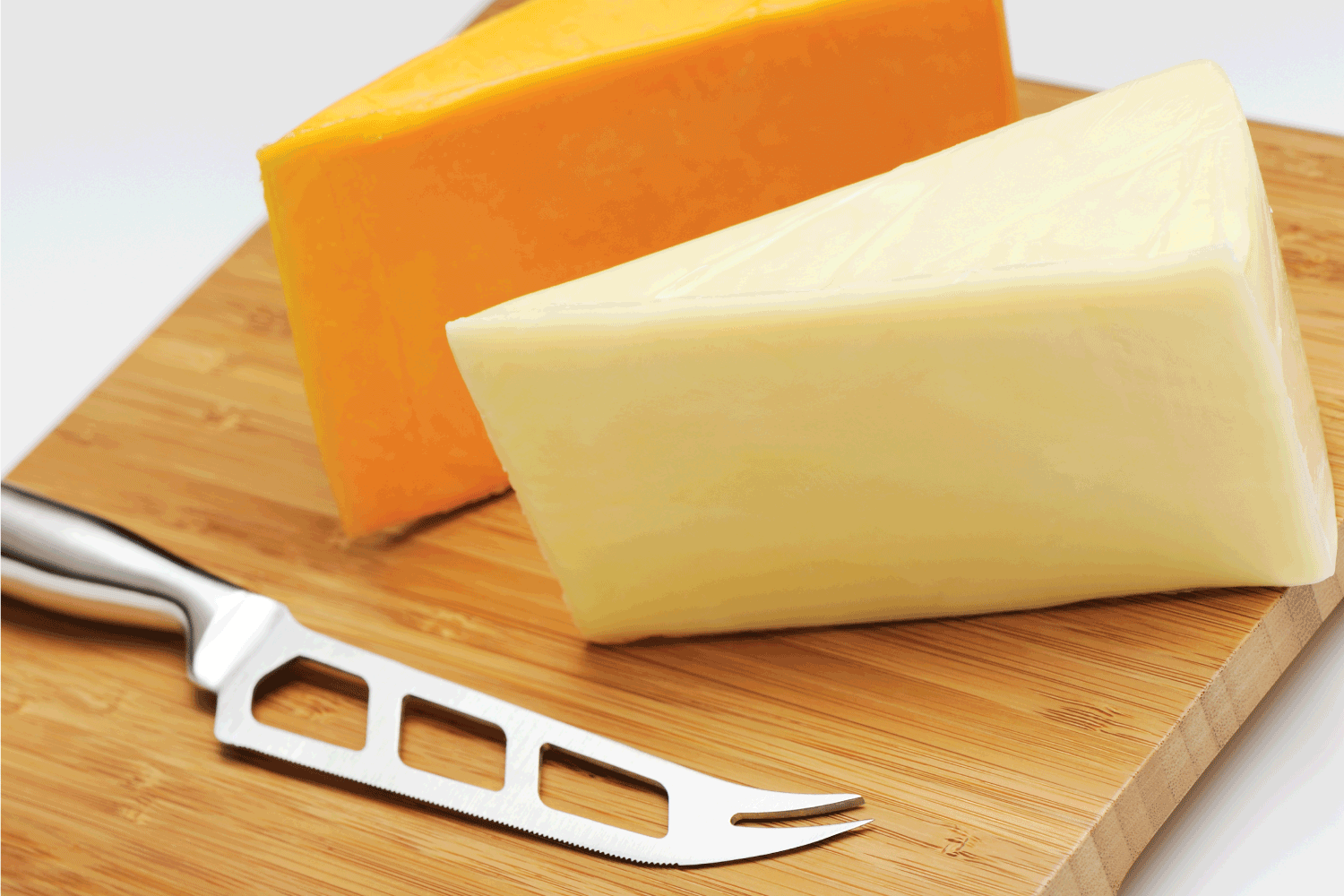
An open work blade, also known as a soft cheese knife, has a very sharp edge and holes throughout the blade. The holes in the knife help to prevent cheese from sticking to it. An open work blade is best for soft to semi-soft cheeses. These cheeses tend to be sticky. A knife with holes in it is a perfect way to avoid that.
To learn more about why cheese knives have holes, check out Why Is There A Hole In A Cheese Knife?
Check out this open work cheese knife on Amazon.
Gorgonzola Cheese Knife
A gorgonzola knife slightly resembles a cheese spreader. This blade is long, narrow, and designed to spread creamy cheeses. Unlike a cheese spreader, a gorgonzola knife has a sharp edge. The sharp edge is used for cutting through the rind of the cheese. The ideal hardness for this type of knife is soft or semi-soft. Gorgonzola and bleu cheeses are common cheeses for this blade.
Flat Cheese Knife
The flat cheese knife has a wide and paddle-like blade. The bottom edge is sharp. A flat cheese knife, or chisel knife, is held vertically over cheese and then pushed downward. This blade is best suited for semi-soft to semi-hard cheeses. Common cheeses include swiss, asiago, and gruyere.
Check out this knife set with a chisel knife on Amazon.
Narrow Plane Knife
A narrow plane knife has a narrow and rectangular blade. Both the bottom edge and long edges are sharp. This knife can be used vertically, similar to the flat cheese knife. Its long sharp edges can also be used as a regular knife. The narrow plane knife is also referred to as the trapezium knife. It is suitable for semi-soft to hard cheeses such as gouda and cheddar.
Cheese Wire

A cheese wire isn't a knife but is still used to cut into cheese. These devices can be attached directly to certain cheese cutting boards. Other cheese wires have their own bow or handle. Also referred to as a bow knife, these are great for cutting soft to semi-soft cheeses such as mozzarella or ricotta.
Certain cheese wires are also referred to as cheese slicers. These are ideal for semi-hard cheeses such as cheddar.
Check out this cheese slicer with a cutting board on Amazon.
Cheese Plane
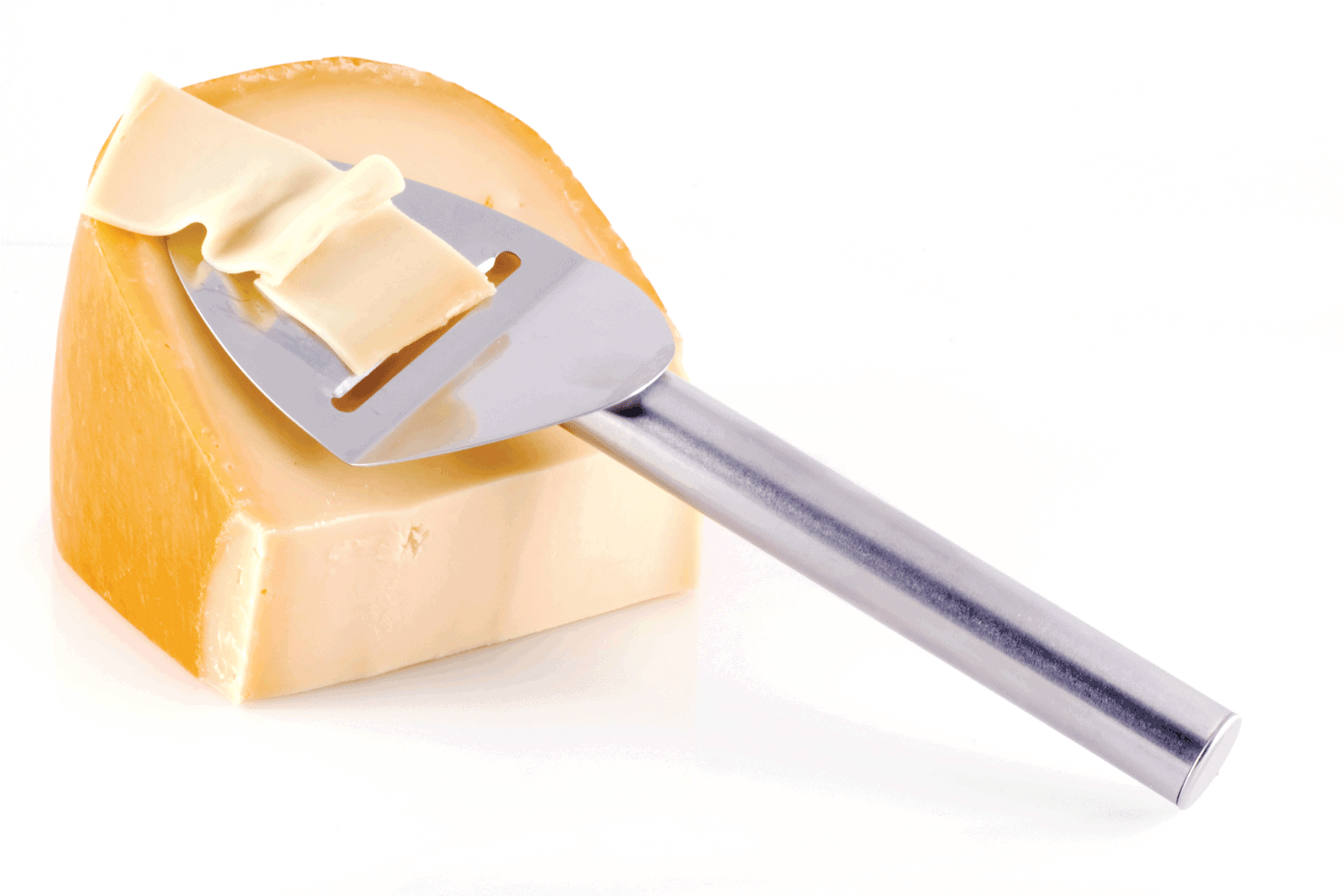
A cheese plane resembles a spatula with a sharp-edge cut in it. It is used for making thin slices of cheese. Many cheese graters have this built into them. However, if you're frequently cutting thin slices of cheese, a dedicated tool will make things easier. Semi-soft to semi-hard cheeses such as muenster and fontina are best for this knife.
Check out this cheese slicer on Amazon.
Rind Cutter
A rind cutter is a short knife with a downward pointed tip. This tool is perfect for cutting the rinds on semi-hard to hard cheeses. Some cheeses include Parmigiano reggiano and Grana Padano.
Cheese Grater
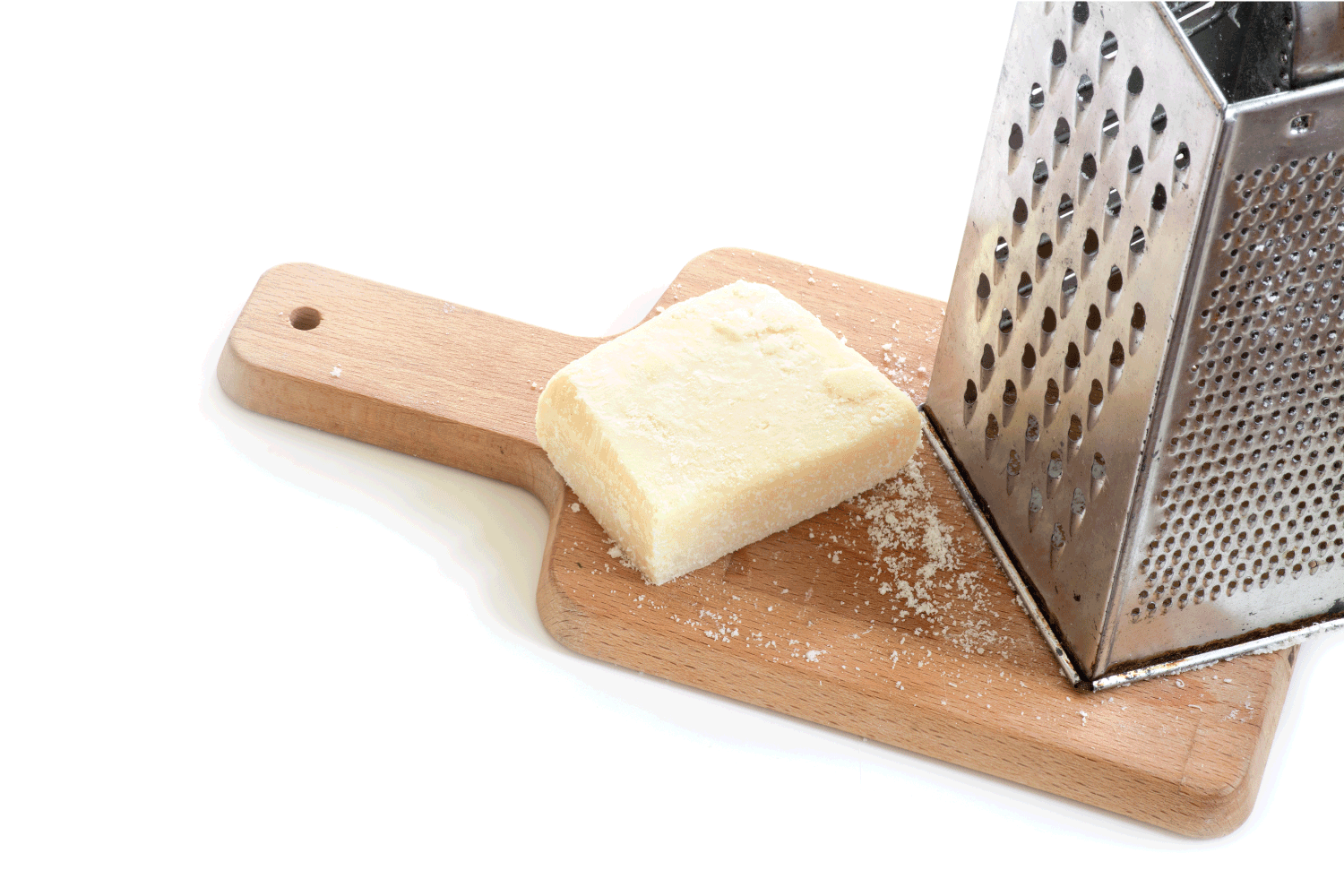
A cheese grater is a convenient tool for someone who frequently grates cheese. This tool is a flat plane with sharp slits throughout it to grate the cheese. Graters can have one side or come in a rectangular shape with more grating options. Semi-hard to hard cheeses such as cheddar and parmesan are well suited for a grater. These can also be used for other foods in your kitchen.
Check out this cheese grater on Amazon.
Must-Have Cheese Knives
If you're looking for the essentials, you won't need every single cheese knife listed here. To have a well-rounded kitchen, aim to have these cheese knives on hand:
- Pronged cheese knife
- Gorgonzola cheese knife
- Cheese grater
- Narrow plane knife
With these knives on hand, you can cut cheeses from a wide variety of hardnesses with ease as well as grate cheese.
For more examples on must-have knives, check out What Kind Of Knife Is Best For Cutting Cheese? [6 Options]
Does Cutting Cheese Dull Knives?
Many things can dull a knife. Putting it in the dishwasher, using certain cutting boards, misusing a knife, and storing it improperly can all dull a knife over time. All these, as well as regular use, can negatively affect your blade.
Sharpening your tools will help make cooking food easier. To learn more about sharpening knives, check out How Often To Sharpen Kitchen Knives?
How Much Should You Spend On Cheese Knives?
The price range for this type of blade is extensive. Some knives cost under $10. Others cost over $400. Fortunately, a knife in the $30 to $100 range will suffice for the average user. Many cheese knives come in sets and are of great quality. Whether you want to get a set or buy your knives individually is a matter of personal preference.
How Do You Cut Cheese Without It Sticking To The Knife?
The best way to prevent cheese from sticking to your knives is to use the correct knife. Having clean, sharp knives and wiping your knife frequently can also help prevent sticking.
In Closing
While you don't need every variation of cheese knife, having a few around will make your job in the kitchen easier. From soft to hard cheese, these knives cover every kind of cheesy treat.












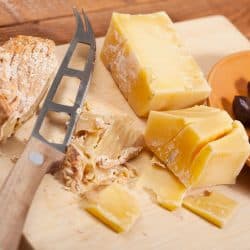
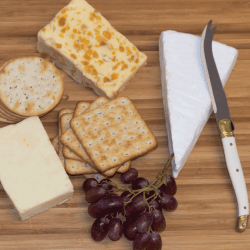
![Cheese with a cheese knife on a cutting board, What Kind Of Knife Is Best For Cutting Cheese? [6 Options]](https://kitchenseer.com/wp-content/uploads/2020/10/Cheese-with-a-cheese-knife-on-a-cutting-board-250x250.jpg)
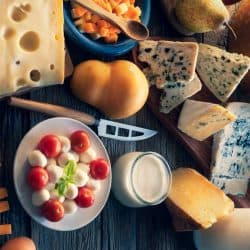

![Aging old cheese in the factory, Does Cheese Always Age Well Or Does It Go Bad Eventually? [According To Type Of Cheese]](https://kitchenseer.com/wp-content/uploads/2021/09/Aging-old-cheese-in-the-factory-250x250.jpg)